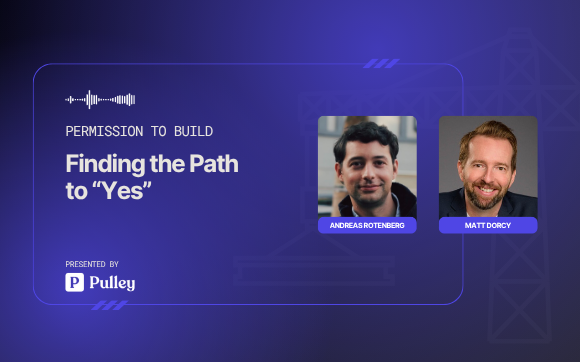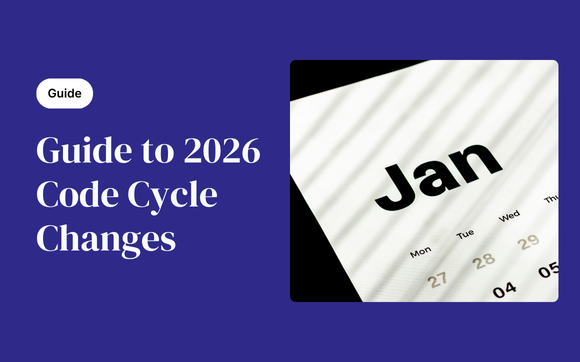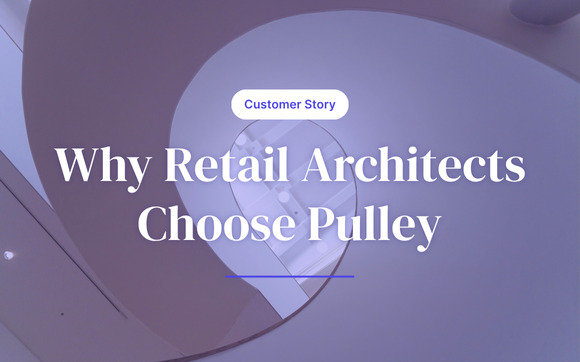How Solidcore Builds Fast Without Losing Form

Few brands have redefined the fitness landscape as quickly or as distinctly as [solidcore]. Founded in 2013, the brand offers a radical type of high-intensity, low-impact workout. In just over a decade, [solidcore] has grown to over 150 locations across 25 states, and cultivated a loyal community along the way.
Behind that growth is a disciplined development program led by Lou Benedetto, Director of Design and Construction. Lou’s path to retail expansion started in architecture.
“I took one of those personality tests in high school,” he jokes. “Architecture was on the list, but the notion of being able to create something and have it physically manifest, that was really attractive to me.”
After earning his degree, Lou joined Kohn Pedersen Fox, a globally-respected architecture firm. He learned early that success in the built world depends less on theory and more on adaptability.
“You spend six years in architecture school, and day one on the job they tell you to throw it all out the window,” he says. “Learning how to learn is the biggest skill that you develop.”
The journey from architecture to retail
After Kohn Pederson Fox, Lou transitioned into brand-side roles at Michael Kors, Equinox, and Cloud Kitchens, before joining [solidcore]. Making the leap from architecture to retail isn’t as drastic as it might seem.
“People joke you've gone to the dark side or something,” Lou laughs. “But as I've further immersed myself in the retail world, you realize that your clients just shift. My clients are the ops team, our field teams, and ultimately our customers. You still have clients, they just look different.”
For Lou, the move hasn’t been a departure from design but an extension of it.
“I look at myself as this liaison between what the brand needs and what our architecture and engineering partners implement in the professional world. It’s an exciting process with so many moving parts.”
The secret to scale: go slow to go fast
Lou’s playbook for scaling is rooted in communication, visibility, and consistency, keeping teams aligned through clear communication and transparent timelines. He always tries to work with a consistent network of architects, contractors, and vendors who really know what it takes to deliver a [solidcore] studio.
The company plans to double its locations and open 250 studios by 2028, and Lou leads a comprehensive due diligence process, treating time spent upfront as the key to acceleration.
“We have robust investment in terms of understanding the market and prospective clientele, and a lengthy due diligence process where we're vetting out the utilities, the permit timelines, understanding inspection challenges. Vetting those unknown risks to mitigate impact to schedule and budget is the name of the game,” he explains.
For retail development teams, site selection has become more competitive over the years. A store opening that might have required 1 or 2 sites in the past, now demands research across 4 or 5 prospective sites.
Lou knows that the due diligence he completes is vital to being able to forecast months in advance confidently and protect open dates.
Pulley folds directly into that process by providing thorough permitting intelligence for each site Lou’s team selects, anticipating submittal requirements, approval durations, and comment patterns before design even begins.
“It all goes back to that diligence process and knowing what the challenges we’re getting into before we even submit for permit. And I think that’s the biggest win that we’ve unlocked.”
Designing for experience and compliance
[solidcore]’s success isn’t just about its number of studios; it’s about consistency of experience. Each studio is designed to feel intimate, immersive, and reflect the distinctive [solidcore] brand.
“Our product isn’t physical, it’s experiential,” Lou explains. And selling an experience that feels different from traditional retail brings its own design challenges.
“One is sound isolation,” Lou shares, “making sure that the music and amplification stays within our space and doesn’t create a nuisance for any adjacent tenants or neighbors in the building.”
Privacy is another. “We aim to create this intimate space, but from a zoning or landlord standpoint, a traditional retail box is all storefront and glass. We've partnered with branding and creative agencies to come up with solutions to make sure everyone's happy with our presence on site.”
Sometimes, maintaining that balance between creativity and compliance means compromise.
“We spent 45 minutes on the phone discussing whether [a mural] was going to be applied with vinyl or paint,” Lou recalls. “We couldn’t convince this community board to go with the paint solution, so we’re pursuing the vinyl.”
Having a permitting partner who can flag compliance issues early has been critical. “The Pulley team caught that the existing building wasn’t built in accordance with zoning,” Lou remembers. “We had to pivot our design at the 11th hour, right before hitting construction documents. But doing it then was a lot less painful than during permitting. We caught it at the perfect time, thanks to the partnership with the Pulley team.”
Transparency as the real growth enabler
As [solidcore]’s portfolio expands, Lou needs complete visibility to keep timelines on track and manage risk.
“The permitting process used to be a black box, a game of telephone where the architect hired a permit expediter, and we’d lose days just in communication flow.”
Since working with Pulley, that box has been illuminated. Every permit, AHJ comment, and approval stage now lives in one shared platform, accessible to his entire team and to external collaborators.
“The Pulley platform is so transparent,” Lou says. “We can log in, see exactly whose court tasks are in, and manage the other deliverables.”
That clarity has translated into tangible results.
“We had a project with Pulley that got approval in 12 days. No comments,” he adds. “We went out and celebrated after that. We don't know what to do with all this time on our hands,” he joked.
Having live and accurate forecasts keeps Lou in control of his entire program.
“The further along you get, the fewer levers you can pull to accelerate the schedule,” he explains. “So it's really important for us to continue to forecast whether or not we are meeting assumptions in our diligence. If a 12-week market suddenly turns into 18 weeks, what can we pull up to maintain our open schedules?”
Looking forward to AI and growth
As [solidcore]’s footprint grows, Lou continues to think ahead. One topic high on his radar is how AI can assist with automation, speed, and standardization, but his philosophy, like Pulley’s, starts with clean data.
“AI is this great tool for taking cumbersome sets of data and giving us solutions that would otherwise take us hours or days to sift through,” he says. “And AI aside, how do we get clean data? How do you consolidate your systems into a single source of truth? Once that’s established, you can start to really build a lasting structure on top of that.”
The idea is simple but powerful: strengthen the structure first, whether through clean data, thorough due diligence, or thoughtful design, and then scaleable growth comes naturally.
That’s how [solidcore] continues to build with velocity without ever losing form.

From Starbucks to Fuzion: How Retail Architect Matt Dorcy Finds the Path to Yes
After leading projects for brands like Starbucks and T-Mobile, Matt Dorcy co-founded Fuzion, a design firm grounded in speed and empathy. In this episode of Permission to Build, Matt discusses the evolution of architecture, building a team of doers, and how Pulley helps him say yes to big client asks.
Read MoreKeep reading

What to Expect for 2026 Code Cycle Changes

Why Retail Architects Choose Pulley

JLL Design Moves with Clarity and Confidence, Spending 50% Less Time on Permitting
Get permits. Faster.
Starting today, with Pulley.
